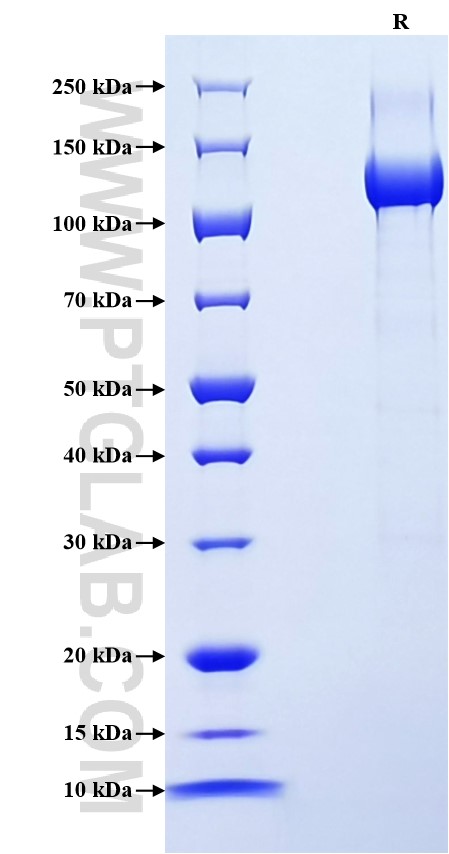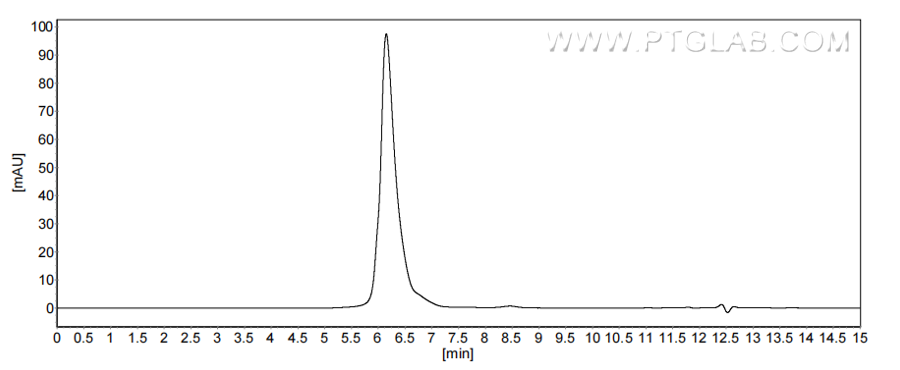Recombinant Human NRP2 protein (rFc Tag)(HPLC verified)
种属
Human
纯度
>90 %, SDS-PAGE
>90%, SEC-HPLC
标签
rFc Tag
生物活性
未测试
验证数据展示
产品信息
| 纯度 | >90 %, SDS-PAGE >90%, SEC-HPLC |
| 内毒素 | <0.1 EU/μg protein, LAL method |
| 生物活性 |
Not tested |
| 来源 | HEK293-derived Human NRP2 protein Arg21-Pro864 (Accession# O60462-1) with a rabbit IgG Fc tag at the C-terminus. |
| 基因ID | 8828 |
| 蛋白编号 | O60462-1 |
| 预测分子量 | 121.1 kDa |
| SDS-PAGE | 110-140 kDa, reducing (R) conditions |
| 组分 | Lyophilized from 0.22 μm filtered solution in PBS, pH 7.4. Normally 5% trehalose and 5% mannitol are added as protectants before lyophilization. |
| 复溶 | Briefly centrifuge the tube before opening. Reconstitute at 0.1-0.5 mg/mL in sterile water. |
| 储存条件 |
It is recommended that the protein be aliquoted for optimal storage. Avoid repeated freeze-thaw cycles.
|
| 运输条件 | The product is shipped at ambient temperature. Upon receipt, store it immediately at the recommended temperature. |
背景信息
NRP2 (Neuropilin-2) is a type I transmembrane glycoprotein belonging to the neuropilin family. It acts as a multifunctional receptor that binds to a variety of ligands, including vascular endothelial growth factor (VEGF) and signaling proteins (e.g., Sema3C and Sema3F), and plays important roles in neurodevelopment, angiogenesis, and immunomodulation. NRP2 is a cell surface molecule that is widely present in pancreatic cancer cells and is upregulated in various malignant tumors, such as hepatocellular carcinoma, gastric carcinoma, thyroid carcinoma and prostate cancer. It plays a crucial role in tumor cell growth, migration, invasion and angiogenesis, and monoclonal antibodies against NRP2 have been proposed as a potential strategy for pancreatic cancer treatment.
参考文献:
1. Zhao Z, et al. Adv Sci (Weinh). 2023;10(30):e2303872. 2. Luo S, et al. FASEB J. 2022;36(2):e22079. 3. Kang Y, et al. Am J Transl Res. 2021;13(8):8938-8951. 4. Schulz A, et al. Front Oncol. 2020;9:1461. 5. Luo X, et al. Cell Biosci. 2020;10:113.



